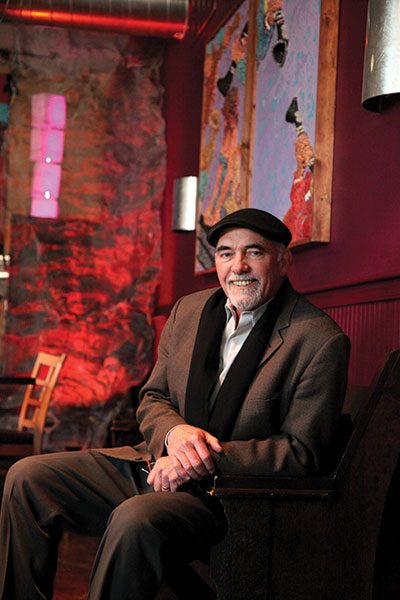
When Patrick Morrissy, director of the Orange-based nonprofit community development group HANDS Inc., talks about the burgeoning local arts district he’s helping to create, he likes to drop the name of a certain Brooklyn enclave known to hipsters worldwide: Williamsburg.
“You don’t have to be a visionary to see it,” says Morrissy, 64, scanning the scene from Arts Unbound, a whimsical gallery on Freeman Street and one of ten buildings that HANDS—an acronym for Housing and Neighborhood Development Services—bought and restored to anchor the new Valley Arts District. “There was all this vacant industrial space, the buildings just deteriorating. Looks like Williamsburg to me!”
Of course, it takes a lot more than blocks of decaying old buildings—in Orange, many of them former hat factories—to attract modern-day bohemians. But what Morrissy recognized was that the Valley Arts District, which runs five blocks north-south and two blocks east-west along the New Jersey Transit train line through Orange and into West Orange, had plenty to offer poets, playwrights, and painters in addition to its cheap real estate.
Two already bustling communities, South Orange and West Orange, flank the district, which should make attracting local art enthusiasts easy, Morrissy says. There is also a contingent of former Orange residents who return to the old neighborhood occasionally for dinner at the town’s popular Italian restaurants.
Orange’s accessibility to Manhattanites—or perhaps Williamsburgers looking to colonize a new hipster enclave—is also a draw. “The Highland Avenue station is right over there,” says Morrissy, pointing through a picture window at a street pocked with murals and hung with Valley Arts District banners.
The district—which, according to Morrissy’s vision, will eventually comprise 100 artist-specific spaces, including workshops, galleries, cafés, and loft-like artists dwellings—does not quite feel like a place where one might don a beret before ducking into a dimly lit coffeehouse to concoct a gallery-hopping plan. But recent developments have nudged it along.
O.R.N.G. INK, a graphic design company staffed by a cluster of Orange teenagers, set up shop last year in one of HANDS’s ten buildings, a former ironworks factory whose backyard space has been transformed into a community garden. After school, under the guidance of local artist Mike Malbrough, the teens churn out—and actually sell—custom T-shirts, sneakers, and skateboard decks decorated with homegrown designs and the distinctive O.R.N.G. INK logo.
“They come here,” explains Malbrough, “they get inspired.”
A few blocks over, Hat City Kitchen, a speakeasy-style jazz club and restaurant done up in hat décor, including actual hats as well as photographs and drawings of various toppers, opened in mid-January to showcase artists like the blues guitarist Billy Hector, who grew up in Orange. Other clubs, galleries, and art-focused businesses are also beginning to blossom.
The new Daily Soup café serves up chicken noodle in the front of the former Coquelle’s Bakery building, once thought to be the best bakery in town, while the back of the building is being revamped as artists’ work spaces. A few blocks over, the former West Orange Brass Company is now home to four art-retail storefronts (one of them Arts Unbound), with four artists’ apartments above. In the back of the Brass Company building, a “meditation labyrinth” has been carved out; the east and west sides of the building have been given over to public art displays.
But as Morrissy acknowledges, it was the addition of a tenant that signed on late last year that may most help the district realize its Williamsburg-like potential.
Luna Stage, the well-loved 18-year-old theater company with a reputation for artistic courage, will begin its spring season in the district after losing its space in Montclair. The theater, currently housed in a temporary space, will move into a new 7,000-square-foot home in a former tool-and-dye shop, a block-long brick structure attached, in the rear, to an old house. There, Luna will share space with a yet-to-be established gallery, café, and a West Orange Police Department substation. A grant of $825,000 from JPMorgan Chase helped finish the renovations.
“I get a great vibe from the Valley,” says Jane Mandel, Luna’s artistic director. “I think what’s happening there, with artists moving in and businesses coming up, is starting to bear fruit. People are feeling like it’s full steam ahead.”
By mid-March, lights and curtains will be installed at the new Luna Stage. Performances are expected to begin in May.
“There’s been tremendous work to put this district together, but it was just great luck that Luna was looking for a space,” says Morrissy, who gives off the air of a beatnik in a Kangol cap and turtleneck. “We’re really becoming more visible to people.”
